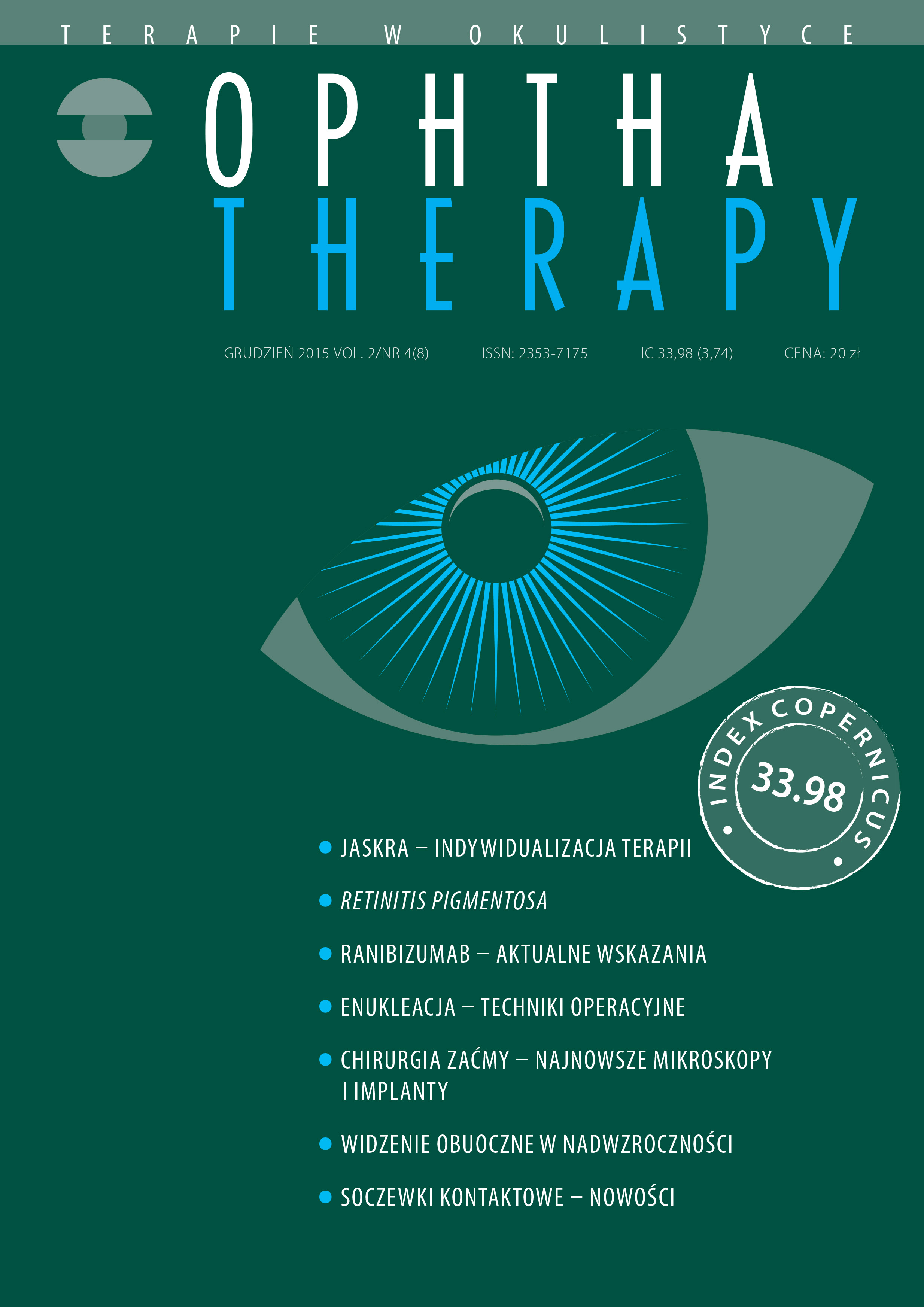Pseudosoczewkowość po operacji zaćmy nie musi ograniczać. Soczewka trójogniskowa jako rozwiązanie problemu starczowzroczności
##plugins.themes.bootstrap3.article.main##
Abstrakt
Wieloogniskowe soczewki wewnątrzgałkowe są nowym narzędziem terapeutycznym w chirurgii zaćmy. Innowacyjne rozwiązania technologiczne pozwalają zmniejszyć potrzebę korekcji okularowej do dali i bliży. Jednocześnie zastosowanie opatentowanych rozwiązań soczewki Alcon AcrySof® IQ Pan- Optix™ uniezależnia jakość widzenia przedmiotów dalekich, pośrednich i bliskich od intensywności oświetlenia i średnicy źrenicy.
Pobrania
##plugins.themes.bootstrap3.article.details##

Utwór dostępny jest na licencji Creative Commons Uznanie autorstwa – Użycie niekomercyjne – Bez utworów zależnych 4.0 Międzynarodowe.
Copyright: © Medical Education sp. z o.o. License allowing third parties to copy and redistribute the material in any medium or format and to remix, transform, and build upon the material, provided the original work is properly cited and states its license.
Address reprint requests to: Medical Education, Marcin Kuźma (marcin.kuzma@mededu.pl)
Bibliografia
2. Apple DJ, Sims J. Harold Ridley and the invention of the intraocular lens. Surv Ophthalmol. 1996; 40(4): 279-92.
3. Haigis W. Challenges and approaches in modern biometry and IOL calculation. Saudi J Ophthalmol. 2012; 26(1): 7-12.
4. Gatinel D, Houbrechts Y. Comparison of bifocal and trifocal diffractive and refractive intraocular lenses using an optical bench. J Cataract Refract Surg. 2013; 39(7): 1093-9.
5. Neil B. Computer vision syndrome. Optometric Management 2002; December Issue. http://www.optometricmanagement.com/magazineviewer.aspx?magDated=200212.
6. Charness N, Dijkstra K, Jastrzembski T et al. Monitor Viewing Distance for Younger and Older Workers. Human Factors and Ergonomics Society Annual Meeting Proceedings. 2008; 52(19): 1614-7.
7. Gatinel D, Pagnoulle C, Houbrechts Y et al. Design and qualification of a diffractive trifocal optical profile for intraocular lenses. J Cataract Refract Surg. 2011; 37(11): 2060-7.
8. Linnola RJ, Sund M, Ylönen R et al. Adhesion of soluble fibronectin, laminin, and collagen type IV to intraocular lens materials. J Cataract Refract Surg. 1999; 25(11): 1486-91.
9. Ursell PG, Spalton DJ, Pande MV et al. Relationship between intraocular lens biomaterials and posterior capsule opacification. J Cataract Refract Surg. 1998; 24(3): 352-60.
10. Auffarth GU, Golescu A, Becker KA et al. Quantification of posterior capsule opacification with round and sharp edge intraocular lenses. Ophthalmology. 2003; 110(4): 772-80.
11. Cionni RJ, Tsai JH. Color perception with AcrySof® IQ natural and AcrySof® IQ single-piece intraocular lenses under photopic and mesopic conditions. J Cataract Refract Surg. 2006; 32(2): 236-42.
12. Mainster MA. Violet and blue light blocking intraocular lenses: photoprotection versus photoreception. Br J Ophthalmol. 2006; 90(6): 784-92.
13. Schweitzer C, Colin J. Patient-Reported Difference following Implantation of a Blue Light-Filtering Aspheric Intraocular Lens and a UV-Filtering Aspheric Intraocular Lens. Case Rep Ophthalmol. 2013; 4(3): 248-51.

